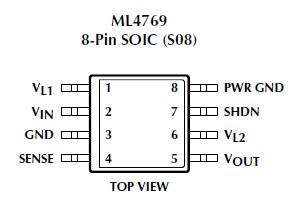ML4769: Features: ·Guaranteed full load start-up and operation at 1.8V input·Continuous conduction mode for high output current·Pulse Frequency Modulation and internal synchronous rectification for high eff...
floor Price/Ceiling Price
- Part Number:
- ML4769
- Supply Ability:
- 5000
Price Break
- Qty
- 1~5000
- Unit Price
- Negotiable
- Processing time
- 15 Days
SeekIC Buyer Protection PLUS - newly updated for 2013!
- Escrow Protection.
- Guaranteed refunds.
- Secure payments.
- Learn more >>
Month Sales
268 Transactions
Payment Methods
All payment methods are secure and covered by SeekIC Buyer Protection PLUS.

 ML4769 Data Sheet
ML4769 Data Sheet







